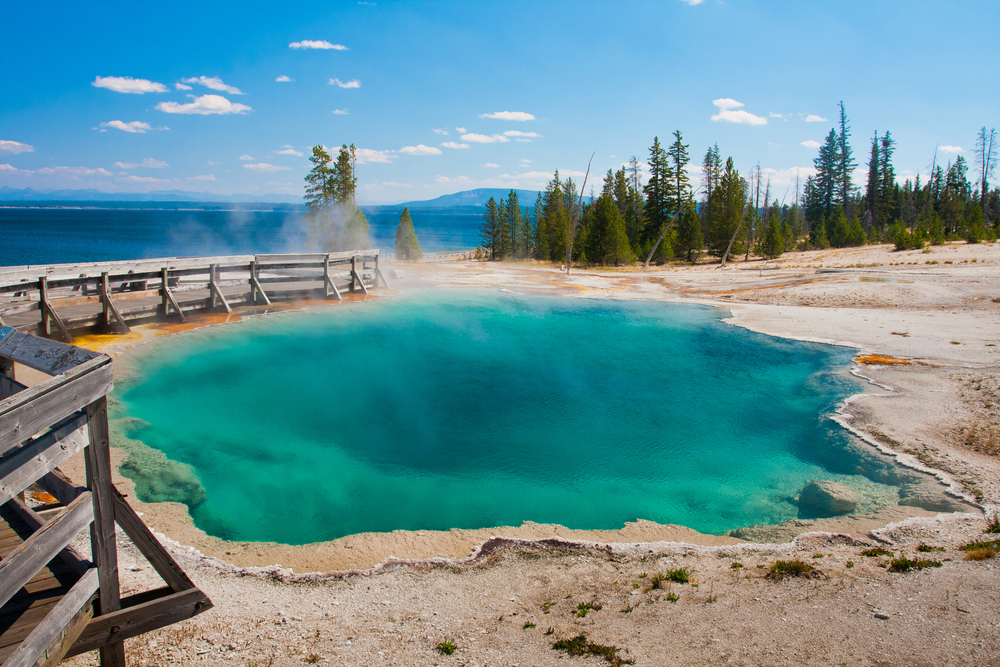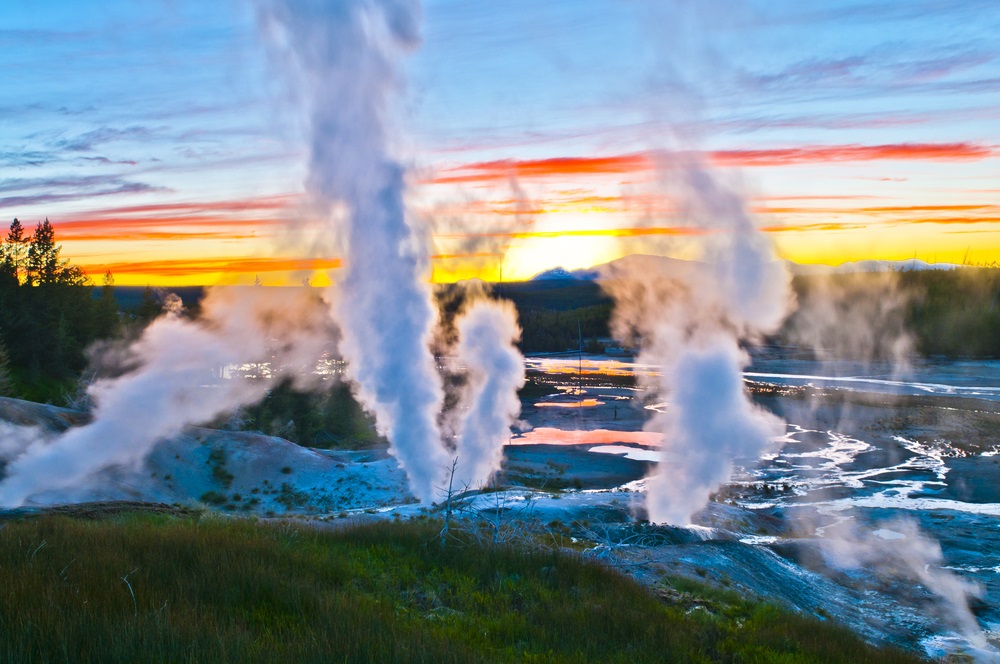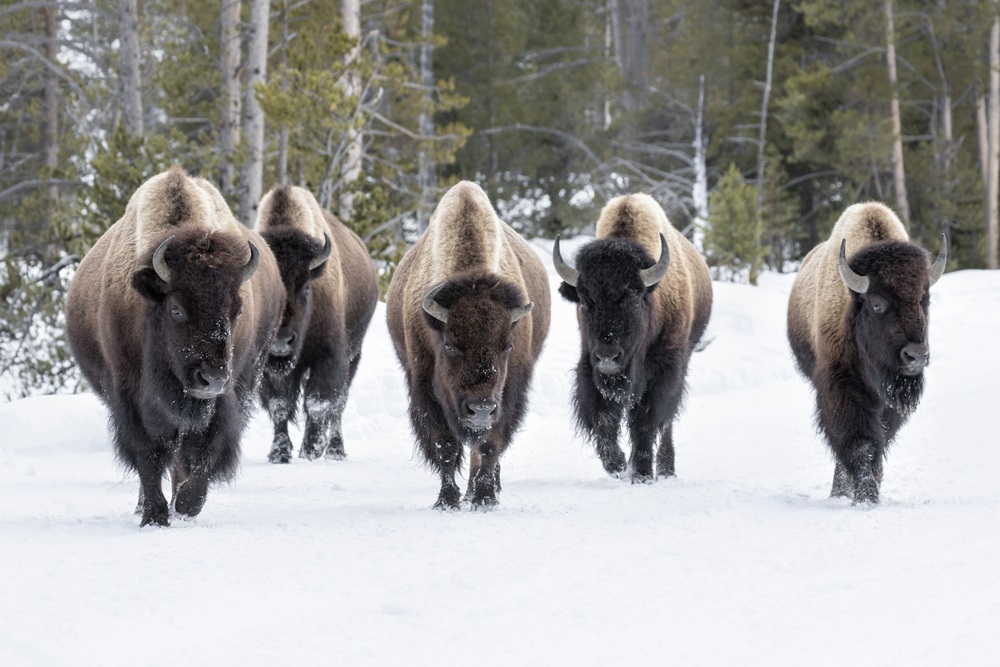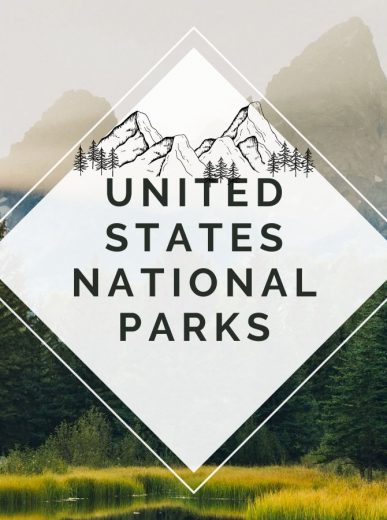Yellowstone National Park, often referred to as America’s first national park, is located primarily in Wyoming and also extends into Montana and Idaho.
Covering more than 2.2 million acres, this UNESCO World Heritage-listed park features breathtaking canyons, lush forests, alpine rivers, pristine lakes, and a wide variety of geothermal landscapes, including geysers, hot springs, mud pools, and fire ports.
This article reveals some interesting facts about Yellowstone National Park and answers FAQs for a more immersive start to your adventure.
✨Tips: It’s recommended to book accommodations and transportation in advance, as they can fill up quickly during the peak season. Check our Yellowstone early discount campaign to plan your trip earlier with the best deals.
15 Facts About Yellowstone National Park
Yellowstone boasts a rich tapestry of history, geology, and ecology, making it a treasure trove of intriguing discoveries. Here are 15 captivating facts to whet your wanderlust:
1. The World’s First National Park
Yellowstone holds the prestigious title of being the world’s first national park, established in 1872. Its designation paved the way for the conservation movement, inspiring the protection of natural treasures worldwide.

2. Sitting on a Super Volcano
Yellowstone sits atop a massive volcanic hotspot, making it the largest active caldera (collapsed volcanic crater) in North America. Don’t worry, the last major eruption occurred over 600,000 years ago!
3. Home to Half the World’s Active Geysers
Geysers, those awe-inspiring eruptions of hot water and steam, are a defining characteristic of Yellowstone. Astonishingly, the park boasts over 500 active geysers, constituting more than half of those found on Earth! Old Faithful, the park’s most famous geyser, erupts predictably every 44 to 92 minutes, captivating visitors with its majestic display.

4. Hot Springs Paint the Landscape
Yellowstone’s geothermal wonders extend beyond geysers. The park is home to over 10,000 hydrothermal features, including vibrant hot springs. Among them, the 121-foot-deep Grand Prismatic Spring is the third largest hot spring in the world.
These colorful pools come in a spectrum of hues–red, orange, yellow, and green–created by thermophilic bacteria thriving in the hot water.

5. North America’s Highest Mountain Lake
Nestled amidst the mountains, Yellowstone Lake is a breathtaking sight. This vast body of water holds the distinction of being the highest altitude lake of its size in North America, sitting at an elevation of over 7,700 feet (2,356 meters).
6. A Land of Extremes
Yellowstone’s environment is one of extremes. Scalding hot springs can reach temperatures exceeding 190°F (87°C), while winter temperatures can plummet to a bone-chilling -40°F (-40°C). This vast temperature range contributes to the park’s unique ecosystem.

7. Yellowstone’s Dramatic Depths
While the Grand Canyon might be the first to come to mind, Yellowstone boasts its own impressive canyons. The Yellowstone River has carved the Grand Canyon of the Yellowstone, a spectacular gorge with colorful layers of volcanic rock reaching depths of over 1,000 feet.
8. Wildlife Wonderland
Yellowstone is a haven for wildlife, with over 600 species of mammals, birds, fish, and reptiles calling the park home. The iconic bison, with their shaggy coats and powerful presence, are a constant attraction.
Keep an eye out for elk, wolves, grizzly bears, bald eagles, and countless other creatures. Remember, wildlife viewing is best done from a safe distance!

9. Yellowstone Experiences Frequent Tremors
The volcanic activity beneath Yellowstone translates to frequent earthquakes. The park experiences an average of 1,000 to 3,000 earthquakes annually, most of them too small to be felt by visitors. This constant seismic activity is a reminder of the park’s dynamic nature.
10. A Rich Tapestry of Forests
Towering lodge-pole pines, fragrant spruce forests, and vibrant aspen groves – Yellowstone’s verdant landscapes are a sight to behold. These forests play a crucial role in the park’s ecosystem, providing habitat for wildlife and contributing to the overall health of the environment.
Yellowstone National Park also protects the largest concentration of petrified trees in the world. These fossilized trees, remnants of a prehistoric forest, offer a glimpse into Yellowstone’s ancient past.

11. Angler’s Paradise
For anglers, Yellowstone offers a bounty of cold-water fisheries. Cast a line in Yellowstone Lake or the many rivers and streams teeming with trout, including the Yellowstone cutthroat trout, a native species.
12.More Than Just Scenery
Yellowstone holds cultural significance for several Native American tribes, including the Lakota, Shoshone, and Blackfeet. These tribes have deep connections to the land, considering it a sacred place for generations.
13. Dark Night Skies
Due to minimal light pollution, Yellowstone National Park boasts some of the darkest night skies in the lower 48 states. Gaze upon a breathtaking blanket of stars, the Milky Way, and even celestial phenomena like meteor showers.

14. A Place Where Time Stands Still
The park boasts a treasure trove of fossils, remnants of ancient plants and animals that roamed the area millions of years ago. Unearthing these petrified wonders offers a glimpse into Yellowstone’s prehistoric past.
15. Foodie Destination (Unexpectedly!)
Yellowstone National Park may not be the first place that comes to mind for fine dining, but don’t underestimate the park’s lodge dining options. Enjoy delicious meals featuring local ingredients and breathtaking views of the park’s scenery.
Frequently Asked Questions
Q: Where is Yellowstone National Park?
Yellowstone National Park is primarily located in Wyoming, with sections extending into Montana and Idaho.
Q: How many acres is Yellowstone National Park?
Yellowstone National Park encompasses a vast 3,472 square miles, making it larger than Rhode Island and Delaware combined.
Q: What is the weather like in Yellowstone National Park?
Yellowstone experiences dramatic seasonal variations. Summers are typically warm and dry, with highs in the 70s and 80s Fahrenheit. Spring and fall bring cooler temperatures and occasional rain or snow. Winters are cold and snowy, with average highs in the 20s Fahrenheit.
Q: What is the best time to visit Yellowstone National Park?
The “best” time to visit Yellowstone depends on your preferences. Summer offers the most comfortable weather and access to all park facilities. Spring and fall boast vibrant wildflower displays and fewer crowds. Winter provides a unique snowy wonderland experience, but some park roads and facilities may be closed.
Q: Where can I stay in Yellowstone National Park?
Yellowstone National Park offers a variety of lodging options, including in-park lodges, cabins, campgrounds, and hotels located in gateway towns outside the park.
- In-park lodges: Historic lodges located within the park, offering a classic Yellowstone experience. (✨Tip: Book your stay early, especially during peak season!)
- Camping:Campgrounds scattered throughout the park for a budget-friendly and immersive experience. (✨Tip: Reservations are recommended, especially during peak season.)
- Gateway towns: Hotels and vacation rentals located in towns near the park entrances.
Q: What airport is near Yellowstone National Park?
Several airports are located near Yellowstone National Park, including Yellowstone National Park Airport (COD) inside the park (seasonal service only), Bozeman Yellowstone International Airport (BZN) in Montana, and Jackson Hole Airport (JAC) in Wyoming.
Q: What are the best places to see animals in Yellowstone National Park?
Yellowstone’s diverse habitats provide ample opportunities for wildlife viewing. Lamar Valley is renowned for spotting bison, wolves, and elk. Hayden Valley is another prime location for wildlife viewing, particularly grazing bison and bears. Yellowstone Lake and surrounding areas attract a variety of birds and waterfowl.
Yellowstone National Park captivates visitors with its awe-inspiring landscapes, diverse wildlife, and geothermal wonders. By exploring these fascinating facts and insider tips, you’ll gain a deeper appreciation for this iconic destination.








There are no comments.